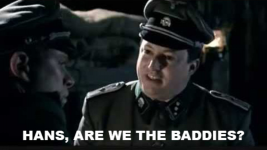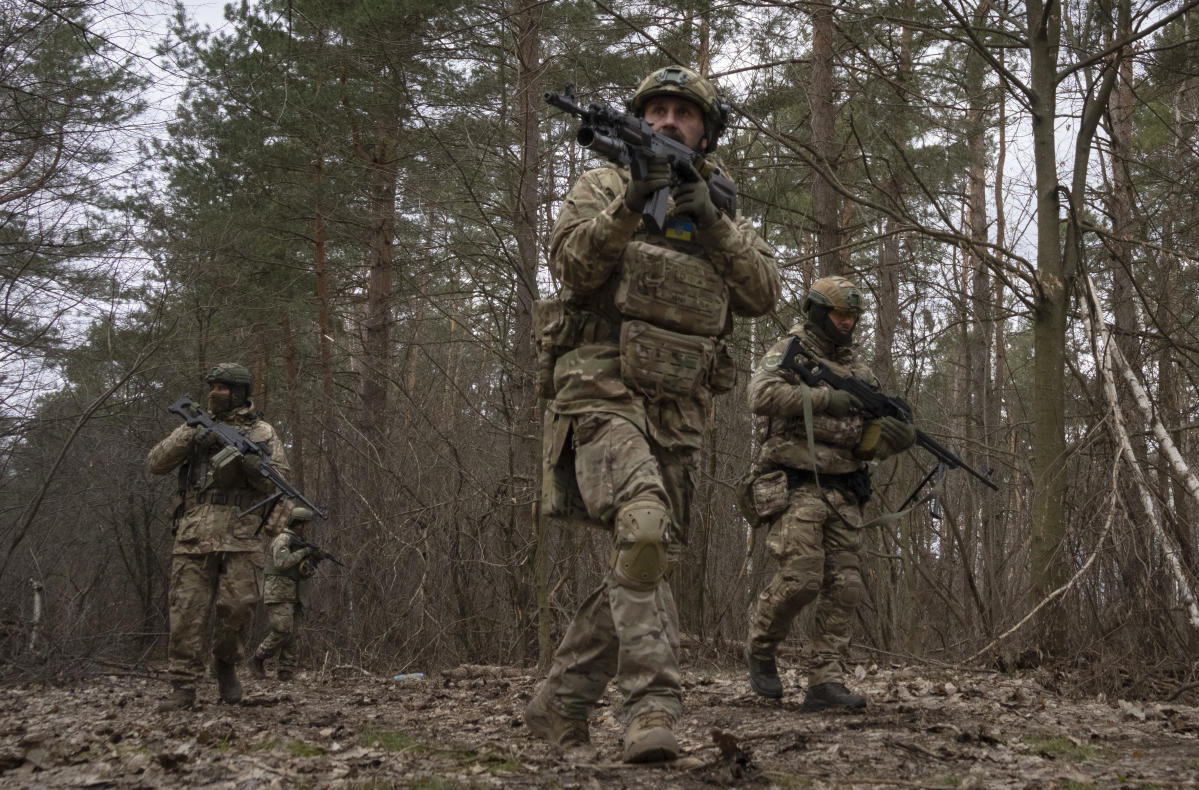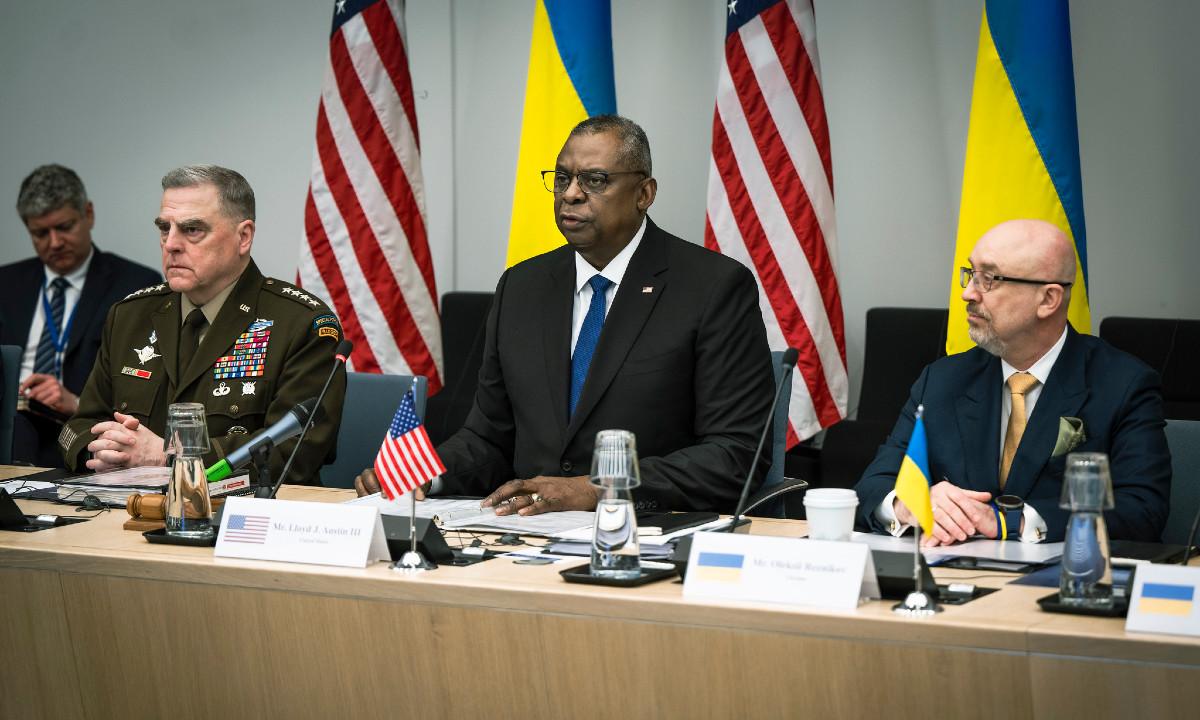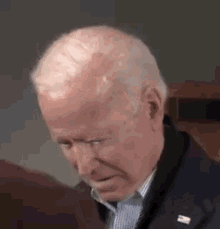Another Point of View Worthy of Consideration. Part One
You And Whose Army?
NATO would do well to stay out of Ukraine.
 Aurelien
Aurelien
Mar 1
50
13
I will do such things –
What they are yet I know not, but they shall be
The terrors of the Earth! - Shakespeare,
King Lear.
Ignorant politicians and muddled pundits have been making noises recently, threatening, or even fantasising about, some kind of formal NATO intervention in Ukraine. In general, they have no idea what they are talking about, and what the practical implications of intervention would be. Here are a few examples of why it’s a stupid idea.
Back in January 1990, I was in NATO HQ in Brussels for a routine meeting of some kind. It was one of those cold, wet days that Belgium specialises in, but there was more than that behind the chilly, mausoleum-like atmosphere of the deserted corridors. For the last few months, the ground had been moving under NATO’s feet continuously, and, not long before Christmas, Rumania, the last hold-out of the Warsaw Pact, had gone up in flames. Nobody had the remotest idea what was going to happen next week, let alone next month, and NATO was beginning to resemble a demonstrator with a placard for a cause that was already out of date. National capitals were struggling to simply keep up with what was going on. I had asked a colleague just back from Washington what the hawks in the Bush Administration were saying. “They’re in a state of shock” was the reply.
The fact that NATO still exists nearly thirty-five years later, and that it now has twice as many members as it did then, has encouraged some people who haven’t been paying attention to believe that NATO is still the same powerful military organisation it was in 1989, and therefore it’s only necessary to threaten formal involvement in Ukraine, and the Russians will creep away. They could not be more dangerously wrong.
The fact that NATO survived at all after 1989 was a surprise to some. But
as I’ve pointed out, the Alliance did actually serve a number of useful purposes for European states, and in any case, the world was changing so rapidly that it was not only impossible to agree on what to replace it with, but it was impossible to know what kind of tasks any future organisation would have to carry out anyway. Organisations don’t just suddenly close down, and in any case NATO actually had quite a lot still to do. That day in January 1990, NATO was still deeply involved in the Arms Control negotiations in Vienna that finally gave the Cold War a decent burial, and continued to have great deal to do, as the negotiating partners across the table started to have what might be described as coordination problems, and as one of them came round to our side of the table. When that saga and its attendant complications were finally sorted out, NATO found itself in Bosnia, then taking in new members in a way that hadn’t been anticipated, then in Kosovo, then in Afghanistan. All of this was essentially improvised: there was no master-plan, other than a pervasive consensus that NATO was more useful than not, and that it was necessary to find things for it to do to keep it going.
But an awful lot was changing behind the scenes. The military structure of NATO, set up in a panic after the Korean War and always ready to mobilise at short notice, was clearly serving no useful purpose now. Slowly at first, and then with increasing speed, the national contingents that had made up its standing forces started to melt away. One after another, European nations abandoned national service, radically reduced the size of their military forces, and stood down their mobilisation procedures. The US forces progressively went home. The generation of military equipment that was coming into service at the time was eventually deployed, in small numbers, and for the most part is still in service now. The tanks and aircraft that NATO intends to send to Ukraine (the Challenger II, the Leopard II, the F-16) are essentially 1970s designs, albeit much updated.
The recognition that NATO’s capability for serious warfare is a shadow of what it once was is slowly starting to percolate through the strategic community, which hasn’t been paying attention for the last generation or so, because its eyes have been fixed on Afghanistan and Iraq. But in fact the situation is a lot worse than that, and as often the real problems are hidden away in the technical complexities. I’ll cover some of those very briefly, to explain why NATO intervention in Ukraine is not really possible, if it were possible not desirable, and even if it were desirable totally ineffective, and even dangerous. Since I don’t have a military background, I’ll leave that part to the experts, and concentrate on the wider issues.
As the British have been making some of the most belligerent noises recently, let’s look at what has changed there since the Cold War. In 1989, the British Army of the Rhine could field a complete Corps of four Divisions, some 55,000 soldiers, ready to be reinforced in war by almost as many reservists and regular units moving from the UK. (The heavy equipment was essentially in place.) There was also a powerful air component. During what was called the Transition to War phase, mobilisation would have taken place under emergency wartime powers, taking people away from their jobs, and commandeering transport and logistic resources to move tens of thousands of combatants to Europe, while families were evacuated in the other direction. Normal government would be replaced, and Parliament would effectively dissolve itself. Tens of thousands of other troops would be mobilised for Home Defence. Civil Defence measures would be introduced to cope with anticipated bombing raids and sabotage operations. Government itself would be dispersed, and Ministers would function as Regional Commissioners.
Similar arrangements were taking place on the Continent, of course. Millions of reservists would have been recalled, sent to their units, and in some cases moved hundreds of kilometres into their wartime locations. Ordinary life would effectively have come to a halt, because mobilisation would have required all of the resources of the nations involved. That’s what modern “war” actually means: why should the Russians agree now to some arrangement that causes us less trouble? Why should they agree to some kind of “war minus,” limited only to Ukraine?
So you have to wonder whether any of the nonentities who talk about being “at war” with Russia have any idea what that means, and understand how these days even the most basic mechanisms don’t exist to make it possible. For a start, war is not just something we do to others. This is not waving goodbye to the boys as they set sail to do battle in foreign climes, this is picking a fight deliberately with someone who can hurt us a lot more than we can hurt them. There are a host of practical implications here: let’s just pick out a few of the more important ones.
Nobody “declares war” these days. Since the Nuremberg Trials and the United Nations Charter, wherein nations undertake to abstain from the use of force, it is no longer possible to proactively begin a state of war with another nation. To say, as some have “we are at war with Russia” is therefore meaningless except as a political slogan. It has no legal force. The only body capable of, in effect, “declaring war” is the Security Council, and that will clearly not happen in this case. Since the Russians have been careful not to attack NATO territory or deliberately engage NATO forces, no “state of war” can be said to exist with NATO nations. What does exist, is a state of “armed conflict”, which has its own
definition: essentially protracted armed violence between states or between states and other armed groups. But “armed conflict” is precisely a state of affairs, not a process or a declaration, and it exists or it doesn’t as a matter of fact and law. Thus, whilst it’s obvious that there is an armed conflict in Ukraine, it’s equally obvious that western states are not parties to it. So it’s hard to see how the fantasies of the bellicose politicians could actually be fulfilled.
The only potential way in which this could be done would be if Ukraine made a formal request for military assistance from western states. This is how the Russians have justified their own operations in Ukraine, by arguing that they are assisting the breakaway republics to exercise their right of self-defence, which is preserved (though of course it was not established) by
Article 51 of the UN Charter. But it’s not obvious what this would mean in practice, and how far western forces could actually go. Direct attacks on Russian territory, for example, would probably be ruled out if this argument were used.
But let us say that somehow these problems could be overcome, and it was joyfully announced that NATO nations were going to enter the conflict as full belligerents. This would make the Russians tremble, wouldn’t it? Actually not. You see, if we are in a state of war with another country, and free to attack them, then they are also free to attack us. There’s no way in which such a conflict could be confined to Ukraine, and no reason why the Russians would want to. So the first consequence is that NATO nations, NATO forces and NATO targets would be exposed to immediate Russian attack, at a point where sub-committees were still labouring away in Brussels trying to generate forces. So what would the Russians reasonably do?
Well, in a state of war, any “
military objective” can be attacked. In practice today, this means military units, military headquarters, the political decision-making chain for the war, and the infrastructure of transport, power, industry etc. which is needed to support it. Now we do not know, and the Russians are obviously not going to tell us, what their long-range strike capabilities with conventional weapons actually are. We do not know, for example, precisely what capabilities they have to bombard the United States with conventional munitions from ships and submarines, and if they intend to use them, but it would be unwise to rule the possibility out. But we have to assume, if only for planning purposes, that they have ways of striking important targets in most or all western countries, with missiles launched from aircraft, ships or submarines. If we very conservatively limit Russian capabilities to attacks on twenty-five major targets, what might they do, bearing in mind that NATO has no effective defence against such attacks? Some targets are obvious: the Pentagon and the White House, for example, or the headquarters of the CIA and the NSA. NATO HQ in Brussels would not last long, not would its military HQ in Mons. The Defence Ministries, Military HQs and Chancelleries of the major European powers can assumed to be likely targets as well.
But of course the Russians are not obliged to hand over a target list, and so in practice, western states would have to consider hundreds of sites as potential targets, depending on what stocks of missiles the Russians had and how they decided to use them. Obviously, all military airfields would be potential targets. But whereas you concentrate ground forces in a time of tension, you disperse air forces. During the Cold War, many countries kept reserve airfields on standby: I’d be astonished if there are many such now. In practice, aircraft would have to be dispersed to civilian airports, which would then become military targets and would have to be closed to civil flights. All military bases, military garrisons, HQs, ammunition storage facilities, repair depots, naval bases, civilian ports to which naval vessels might be dispersed, intelligence gathering facilities and major transport hubs, among other things, would have to be considered potential targets.
All this matters, for two reasons. Firstly, no government today has made serious provision for continuing to run the country during a conventional war, with the risk of air and missile attack. In the earlier days of the Cold War, there were plans for governments to go underground during the conventional phase of any war in special shelters, a number of which still exist. But towards the end, nuclear weapons had become so accurate and powerful that it was thought very unlikely that any of these facilities would survive a subsequent nuclear attack, and so they tended to fall into disuse. So effectively, not only are NATO nations unable to defend against such a conventional missile attack, they have no means of protecting what is called the “continuity of government” from such attacks either. So a missile on the Elyséé Palace, one on the Defence Ministry and one on the Land Forces HQ at Lille, and that would be about it for France, for example.
Secondly, whilst the new generation of Russian missiles are allegedly pretty accurate, we must remember that accuracy is relative, and cannot be guaranteed. Accuracy is normally expressed according to a measure known as the Circular Error Probable, or CEP. This is the radius from the target within which fifty per cent of the missiles are expected to fall. No guarantees are given about where the other fifty per cent will land. So if a missile has a CEP of 200 metres, then fifty per cent of the time it is expected to land within a circle 400 metres across, whose epicentre is the intended target. Given this, given the blast radius of the explosions and the tendency of some missiles to get lost, it’s safe to say that anyone or any building within a kilometre of a potential high value target is potentially at risk. All over the western world, hundreds of thousands of people often live near airports, seaports, and headquarters. (The UK’s Permanent Joint HQ is in a quiet outer suburb of London.)










